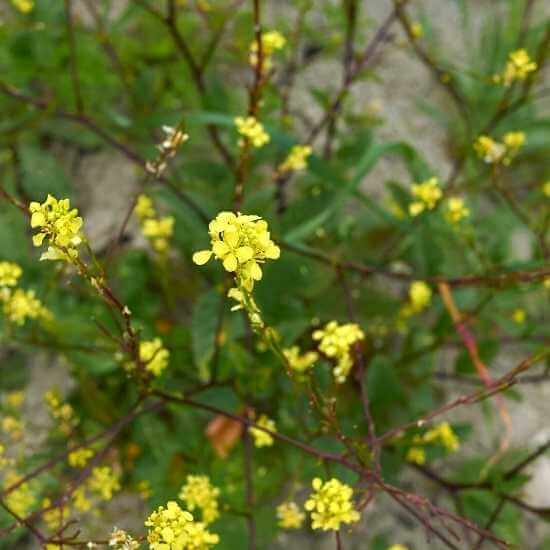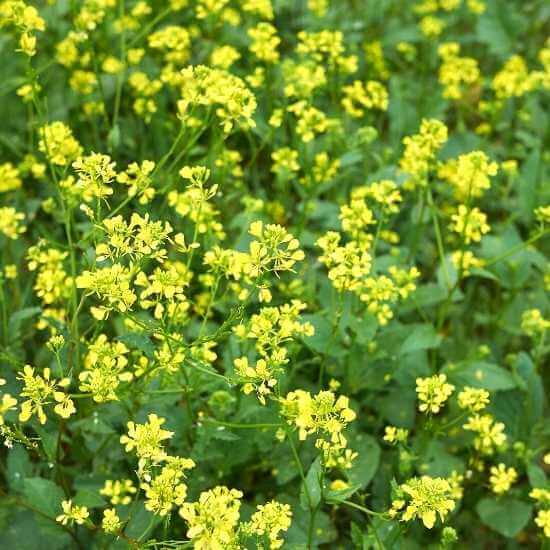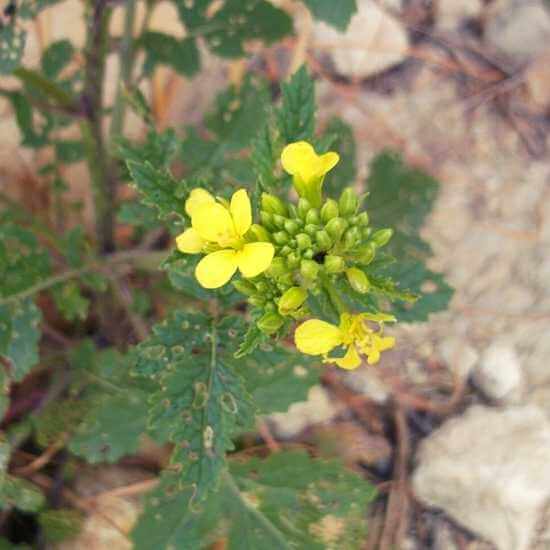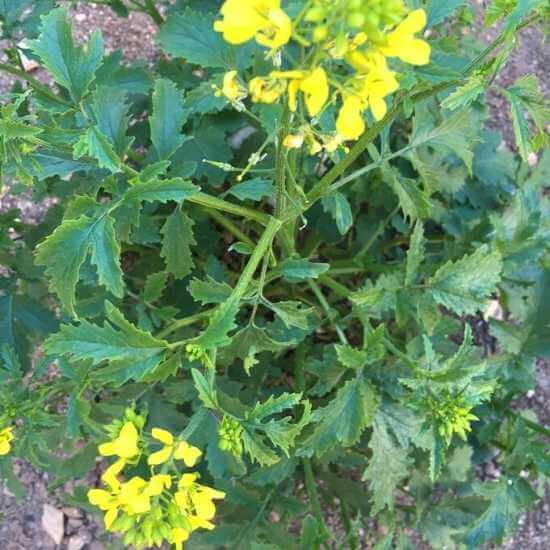Foraging Gozo. Sea Beet.
Sea Beet is found growing wild on Gozo and is a great alternative to chard.

We are delighted to welcome back Heléna Szöllősy, the author of the fascinating book, Weeds For Health On Gozo, for the second series of Foraging Gozo, where we uncover the natural benefits of Gozo’s healing flora through the seasons. The spotlight starts on Charlock, the early flowering plant of the mustard family which not only adorns Gozo’s fields with colour but is bursting with edible goodness from its flowers, seeds, leaves and oils. Read on to learn more.


Botanical Name: Sinapis arvensis – L. Synonyms: Brassica arvensis, Brassica sinapis, Brassica sinapistrum Family Name: Brassicaceae Maltese Name: Mustarda selvaġġa Common Names: Charlock, Charlock Mustard, Crunchweed, Field Mustard, Wild Mustard Meaning of the Name: Sinapis, from, Latin sinapi, name for the mustard plant, from the flavour of the seeds, arvensis, from Latin arvum, field, cultivated land, plowed land, of cultivated fields
Charlock is an annual growing to 0.8 m (2ft 7in), reaches on average 20–80 cm (7.9–31.5 in) of height but under optimal conditions can exceed one metre. The stems are erect, branched, and striated, with coarse spreading hairs especially near the base. The leaves are rough, unequally cut, and serrated, and the flowers, which are yellow and large, are followed by nearly erect, angular, knotty pods, longer than their flattened conical beak.


Flowering on Gozo occurs from January to May. The inflorescence is a raceme made up of yellow flowers having four petals. The fruit is a silique 3-5 cm long with a beak 1-2 cm long that is flattened-quadrangular. The valves of the silique are globous or rarely bristly, three to five nerved. The seeds are smooth 1-1.5 mm in diameter Charlock is a troublesome weed on arable land.
Precautions: The plant is possibly poisonous once the seedpods have formed. Avoid long-term contact of mustard oil with skin because of its irritant and inflammatory effect
Author : Heléna Szöllősy. Editor: GITH

Helena is an expert on the medicinal properties of plants having trained in Herbal Medicine and Naturopathy, specialising in Phytotherapy including Homeopathy, Aromatherapy, Apitherapy and Bach Flower Therapy.
Information on the traditional uses and properties of herbs are provided in this book for educational purposes only and is not intended as medical advice. This information is not intended to be used to diagnose, prescribe or replace professional medical care. If you have any serious health concerns, you should always check with your health care practitioner before self-administering herbs. Please also undertake your own research when foraging. Some wild plants are endangered and are protected by law.
Want to learn what else you can forage on Gozo? Click here.
Sea Beet is found growing wild on Gozo and is a great alternative to chard.
Did you know Wild Asparagus Is really good for your skin? You can find it on Gozo all year round.
Wild Artichokes Are found growing wild on Gozo and super healthy for the liver.
Small White Clover, found growing wild on Gozo and known to be lucky makes a great pudding!